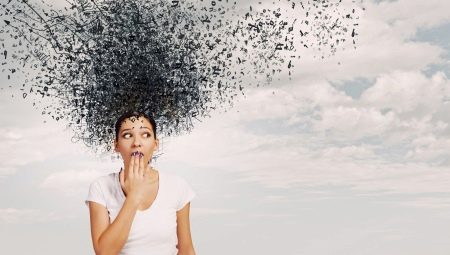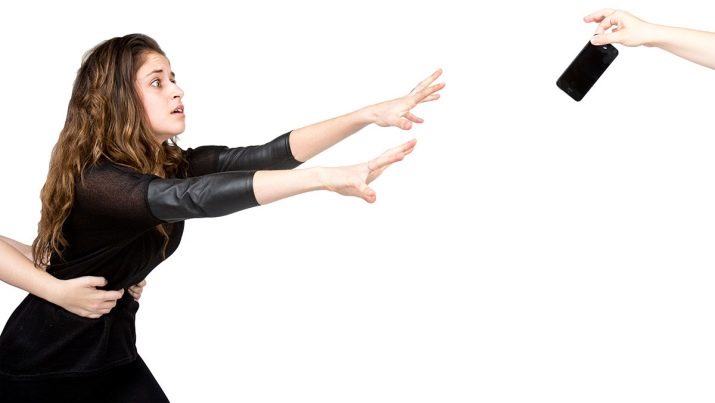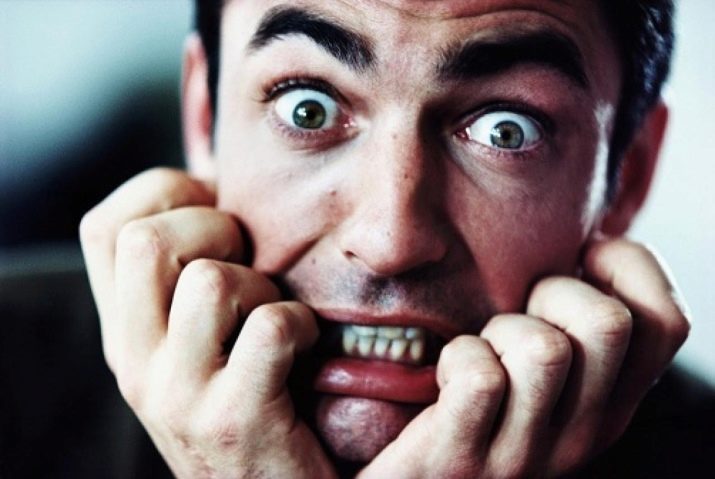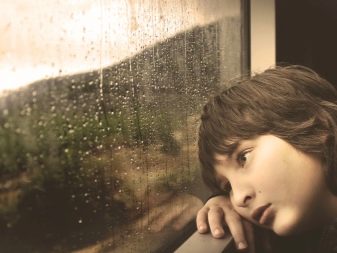Many of us are afraid of the dark, air travel or confined space. There are countless diverse phobias, because each of us is individual, like our fears. From this article you will learn about the most amazing and unusual phobias that are diagnosed in humans.
Top unusual phobias associated with gadgets
Recently in the world there are more and more phobias associated with modern technology. There is an explanation for this: with the development of technology, our world very quickly changed, and most people are afraid of any changes, because they are associated with instability and surprise. There are seven most common fears generated by gadgets.
- Nomophobia - is the fear of losing a mobile phone. Have you ever forgotten your smartphone, leaving the house at least briefly? If you experienced significant discomfort from this situation, anxiety and a sense of security close to a panic, then perhaps you have nomophobia. This name comes from the English "no mobile phone". The term was first introduced by researchers back in 2008, when it became clear from experimental data that more than 50% of the subjects felt perceptible fear when they were left without communication. Now the spread of this disease is only progressing.
Check yourself: try turning off your smartphone for a day and see if you will be comfortable.
- Cyber phobia is the fear of computers. This is quite a natural phenomenon, as computers surround us now everywhere, and artificial intelligence is actively developing. Many wonder what will happen if all the power of electronic equipment turns against a person. In extreme cases, this phobia even has physical symptoms: patients who experience computers feel nauseous and dizzy. This fear really prevents many people from living, because in today's world it is extremely difficult to protect themselves from computers. However, psychologists successfully help patients solve this problem.
As a prevention of cyber phobia, it is recommended to work with a computer for several hours a day.
- Socionethobia is the fear of social networks. Indeed, in the era of the development of communication in the network, many are afraid to start accounts and upload personal data there - a photo, a real first and last name, and so on. Fear is associated with the prejudice that the accounts can be snooped or manipulated. Some, for example, do not want their family and friends to see them on a dating site. Others are afraid to post personal photos with their families on their pages so that their bosses will not see them at work. Psychologists also successfully solve this problem.
To fear disappeared, you need to make a social network comfortable for the person. For example, provide communication in communities with similar interests.
- Trollephobia is another unusual modern disease. Trolls are people who leave negative comments in order to get a certain emotion and response from the interlocutor to intentionally harm his personal reputation or his project. Unfortunately, among the users of modern social networks there are indeed a lot of trolls, and not everyone is able to ignore their provocations with dignity. Most often, the disease occurs in vulnerable people, dependent on the opinions of others, as well as in overly suspicious and incredulous people.They strive for anonymity, are afraid to draw attention to themselves in the virtual space, refrain from public comments.
Psychologists advise to maintain common sense: it is important not to succumb to the provocations of the trolls, but it’s not worthwhile to completely deprive yourself of participation in virtual discussions.
- Emodzhifobiya - another extraordinary fear, which appeared with the growing popularity of emoticons on the Internet. Those suffering from emoji phobia are afraid to put any symbol inappropriate and fear that the interlocutor will misunderstand them, based on the smile. In one way or another, many people have this phobia: now the overwhelming majority of users use positive smiles in any context, fearing that a simple sentence with a dot will be read aggressively. Most often, this phobia does not last long, but appears periodically and very selectively. This is due to the fact that we are in correspondence with our colleagues on the network, with superiors, with relatives, and with friends.
You have to constantly change your speech depending on the interlocutor, and not everyone copes with it quickly.
- Selfi-phobia is the fear of getting bad on selfies. Despite the fact that fear sounds quite comical and strange, psychologists argue that this is a real disease that is difficult to treat. The psychological problem is more characteristic of young girls, but sometimes it catches up with young males and even older people. With the development of social networks, many active users need constant approval from their subscribers. For the sake of good photos, sometimes even plastic surgery is done. As a preventive measure against this phobia, it is recommended not to spend too much time on social networks and focus not on your own photos, but directly on communication.
- Tredofobiya - is the fear of leaving comments on social networks or in discussions on forums. Usually such people are quite shy and closed in life. Some become more relaxed on the Internet, while others close even more and completely refrain from public communication. This is due to the fear that an unsuccessful comment will remain in the discussion thread, will negatively affect the reputation of the writer, will become the object of ridicule. Treadmills are very afraid of criticism, they are afraid to receive threats or insults in response to their opinion. Very often they solve a problem by creating anonymous accounts and feel much more comfortable with them.
Treatment of a disease should usually be complex - it is associated with the development of self-confidence and calm communication skills both in life and online.
Things and products that terrify
In humans, fear can cause very different things. If most people respond to unusual phobias with surprise, these are real problems for patients. Consider things, objects and phenomena that provoke anxiety and fear.
- Buttons are a familiar part of life for us, but some people may be seriously intimidated. Such a disease is called compunophobia. Phobia is quite rare, but very uncomfortable for the patient, because buttons surround us everywhere.
- Vegetables for some also cause uncontrollable fear. In severely ill patients, rapid pulse, uneven breathing, nausea and trembling are observed. Some can not even eat the product, next to which lay a vegetable. This phenomenon is called lacanophobia.
- Psychologists have called fear of rain ombrehobia. Often it is formed from early childhood: when we fear thunderstorms and do not leave the house or when parents forbid walking in the rain so as not to catch a cold. Also, this phenomenon of nature for many is associated with sadness and loneliness: if a person is currently in an unstable emotional state, it is the rain that can cause an aggravation of depression.The causes of the fear of rain in each patient are different, so the treatment is also very different.
- Fear of small holes is one of the most famous strange phobias. It is not as rare as it may seem. Patients experience fear and aversion to leaky objects - it can be all sorts of sponges, exotic flowers or honeycombs. Fear manifests itself at an unconscious level and has no obvious reasons or explanations. This disease is called tripophobia.
- Horophobia is the fear of dancing. Usually this phobia is affected by shy people or individuals who are in poor sports form: they themselves do not like to dance and will never do it in public. However, the phobia is spreading wider: patients avoid any situations related to dancing, be it ballet or a disco in the club. Sometimes a phobia can be associated with childhood injuries - usually it shows a person’s insecurity in himself.
List of people causing fear
Sometimes it is not inanimate things that instill horror into people, but people. And it can be both social groups and very specific individuals. Such phobias are rarely encountered, however, are a real problem during treatment, because their causes are very variable.
Some adults are diagnosed with teen phobia. This is called ether beefhobia.
Most often, this fear is manifested in parents who do not know how to behave with their own child at his transitional age and cannot find contact with an adult son or daughter. Also, older people often avoid clusters of teenagers: the cultural gap between them is too great, the elderly do not understand the slang, lifestyle and style of dress that is inherent in young people, therefore, they are often afraid of teenagers.
There papaphobia - this is the fear of the Pope. Fear is extremely rare and is often the result of trauma. This phobia is associated with fear of religious rites, priests, and any attributes of a particular religious culture.
For many adults, circus artists cause subconscious rejection.
Colerophobia is the fear of clowns. Phobia seems unusual, but has recently become increasingly common. It is connected with the fact that the clown's face is brightly painted like a mask, which does not allow him to understand his true emotions and intentions: this uncertainty breeds mistrust and a sense of danger. Sometimes fear of clowns occurs in children.
Other strangest and stupid phobias
There are a lot of strange phobias that we don’t even think about. Some fears may seem very stupid from the outside, and in other situations we will recognize ourselves. Consider the other most amazing and unusual modern phobias.
- An interesting phenomenon is haptophobia - the fear of touching other people. Patients are under great stress, being in crowded places, in a crowd or in public transport. Sometimes even friendly touches of acquaintances in a company cause panic: only those who are very close to whom they can fully trust will be comfortable for haptophobes. Sometimes emotional discomfort is accompanied by even physical pain. There is also the fear of touching men or women - this is often associated with injuries.
- Fear of decision making is another absurd phenomenon called decidophobia. Many of us crave freedom and control over our lives as much as possible, but those suffering from this phobia are trying by all means to avoid responsibility. In part, this may be due to the type of personality: uncertain and fearful people are more likely to suffer from such a disease. Sometimes a phobia occurs after the tragic events in life that followed the adoption of a certain decision.
- Caliginophobia is another extremely unusual disease, which is the fear of beautiful women. Most often this is typical for men: it can be inexperienced adolescents, once rejected adult men or representatives of homosexual. Such men feel insecure in communication and in every possible way avoid interaction with spectacular women. Sometimes the disease occurs in women, because they see a rival in the object of their phobia.
- Ablutophobia is the fear of swimming and taking a shower. In its extreme states it can be very unpleasant, even to the point of physical discomfort. The causes of this phobia in different people vary: some feel too vulnerable in the bathroom and fear attack, while others are afraid of water because of the risk of drowning and drowning.
- There is an irrational fear of suffering any phobias - this is phobophobia. This is a difficult phenomenon to understand, but obsessive thoughts about the danger of becoming a victim of a phobia significantly spoil the sick life. Psychologists solve this problem depending on the individual reasons.
About 26 strange phobias, see below.























